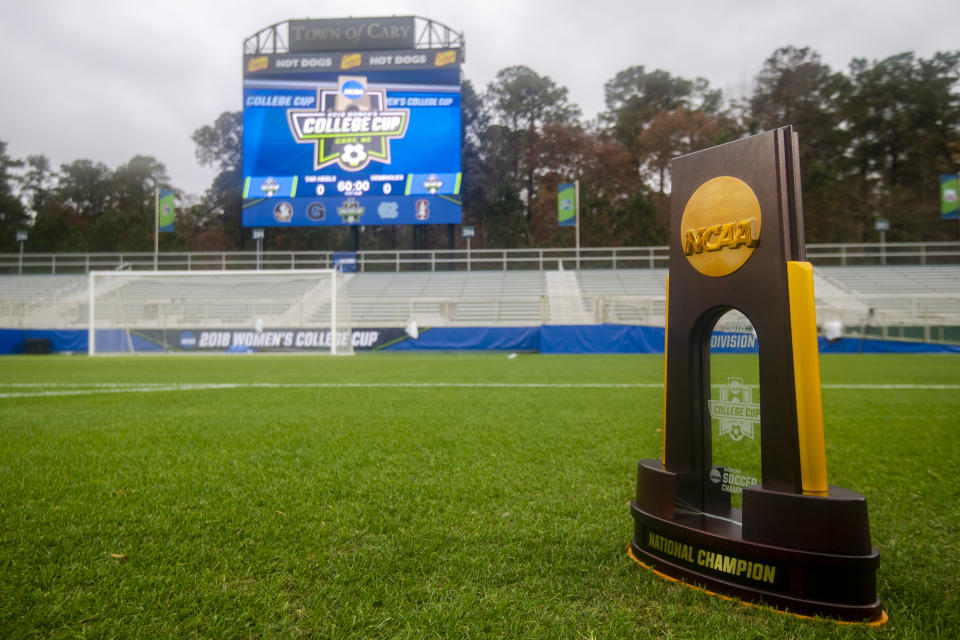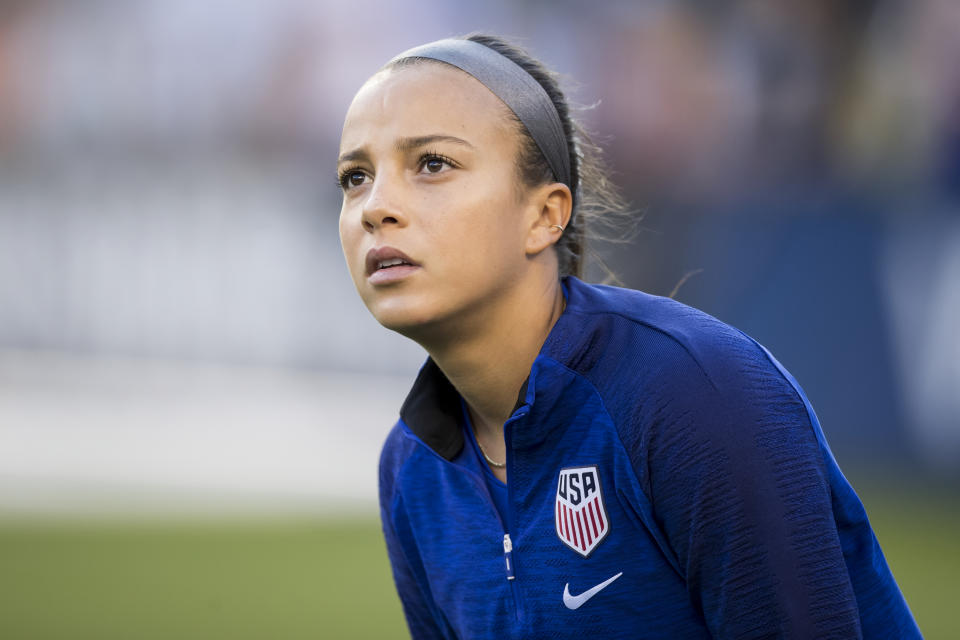The NCAA's proposed NIL rule could have a big impact on most sports — just not soccer
It’s well understood that Tuesday’s sudden announcement by the NCAA that it was considering a rule change allowing student-athletes in college to receive money from endorsements and image rights could be cataclysmic for the revenue sports like football and basketball. That is, if the governing body actually follows through and makes a meaningful change to allow players to monetize their fame.
It is by no means clear how these new, as-yet-to-be-written rules will shake out, exactly, and whether the benefit will be monetary or come in some other form. Or whether it will be immediate or deferred. Consider, after all, that the NCAA declared that any modernization would have to occur in “a manner consistent with the collegiate model,” whatever that means. And as the journalist Patrick Hruby points out in his excellent Hreal Sports newsletter, the NCAA has positioned itself to remain firmly in control, and as such will likely retain its stranglehold on the ample revenue some of its sports produce.
But regardless of the outcome, the impact on college soccer will probably be negligible. In fact, out of the five major sports, soccer is likely to feel the smallest effects.

It’s plainly obvious that any such rule change won’t matter much on the men’s side anyway. College soccer is too far gone. As the preferred route to a professional career, it has long since been usurped by Major League Soccer’s academies, or indeed the option of a move to Europe right out of high school. The level in the college game is simply too low, the season too short, and the NCAA rules too restrictive to effectively develop talent. At best, college soccer remains as a kind of last-chance backdoor for marginal prospects and late-bloomers.
But those aren’t the players who stand to benefit from their names, imagines and likenesses. Christian Pulisic was never going to be playing in college, even if he’d been better able to collect on his market value there. Indeed, the only college player to break into the senior national team in a generation was Jordan Morris, and even so, his value to advertisers would have been insignificant.
Making a prediction is not so straightforward on the women’s side.
A fair number of women break into the senior national team while still in college. Some, in fact, do it sooner, like Mallory Pugh. But combining college and the national team means surrendering the salary and benefits and the substantial endorsement and image rights income associated with the latter. Would this rule change allow college players to collect the latter two?
Collegiate national teamers would likely be allowed to take endorsements from cleat manufacturers or anybody else, should they be worth the investment to a sporting goods company at that stage.
But the real money would come from the share of the team’s image rights the USWNT Players Association has just begun handling collectively. The revenue from that alone could be a million dollars by the end of 2019 and is expected to rise further in the future – as reported by Yahoo’s Caitlin Murray. A college player’s share of that alone could amount to tens of thousands of dollars a year.
Except that the devil is in the details here.
College players aren’t part of the national team players union because they aren’t employees of U.S. soccer – because they can’t collect the salary and benefits. So they aren’t covered by the collective bargaining agreement, not a part of the image and likeness pot and therefore not entitled to a share of the revenue. And for that matter, it’s unlikely that the NCAA would allow you to collect on image rights of a non-college team you might play for – just those of your school team. Because that would effectively make you a professional.
So all that probably remains for a collegiate women’s national teamer is the endorsements.

Might Pugh have stuck around at UCLA for more than a semester – making zero appearances for its soccer team – if she’d been able to sign her Nike deal before going pro? Perhaps. But by one estimate, she would have still foregone at least a million dollars by spending all four years in college while on the national team but not able to earn anything from it directly.
Would Lindsey Horan have honored her commitment to the University of North Carolina, rather than bolting for Paris Saint-Germain as a teenager? Maybe.
Could 13-year-old phenom Olivia Moultrie have passed through the college system, rather than signing on with the Portland Thorns before she’d even played in high school? Possibly.
But all of that is unlikely. Because the financial gap between college and the pros will surely remain vast, even if the former isn’t zero anymore. And in women’s soccer, going pro is often a developmental decision as well as a monetary one.
So the NCAA’s rule change is unlikely to prevent the seemingly inevitable hollowing-out of the women’s college game, just as it happened on the men’s side where no real prospect passes through any longer. Ambitious NWSL teams developing their own academies and a path to Europe that becomes more viable every year will likely spell doom for the collegiate women’s game. Even if it becomes a tad fairer than it had been before, it still won’t make sense for the most talented players.
Leander Schaerlaeckens is a Yahoo Sports soccer columnist and a sports communication lecturer at Marist College. Follow him on Twitter @LeanderAlphabet.
More from Yahoo Sports:
